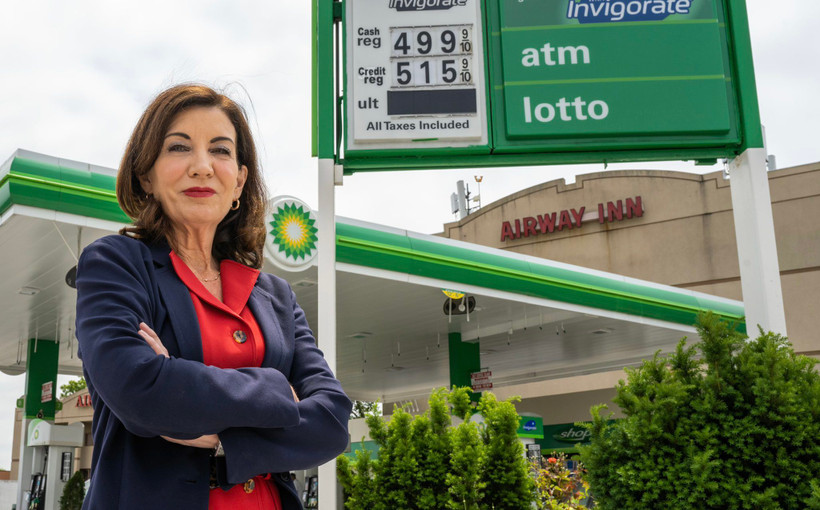Most of New York Gas Tax Holiday Savings Don’t Go to New Yorkers, Analysis Finds
Out of every dollar the gas tax suspension costs the state, less than 50 cents are going into New Yorkers’ pockets.

Out of every dollar the gas tax suspension costs the state, less than 50 cents are going into New Yorkers’ pockets.

I hope this article helped you better answer the question that guides all of our journalism: Who runs New York? Before you click away, please consider supporting our work and making more stories like this one possible.
New York state is standing at a crossroads for climate action. After passing one of the nation’s most ambitious climate laws in 2019, the state is lagging far behind on its targets, struggling to meet deadlines to build renewable energy and clean up its buildings and roads. Other states are closely watching our progress, making decisions about their own climate plans based on New York’s ability to implement this legislation.
As New York’s only statewide nonprofit news publication, we’ve been scrutinizing the state’s climate progress. Our journalism exists to unpack how power works in New York, analyze who’s really calling the shots, and reveal how obscure decisions shape ordinary New Yorkers’ lives.
But we can't do this work without your help. We rely on reader donations to help sustain our outlet, and every gift directly allows us to publish more pieces like this.
Our work has already shown what can happen when those with power know that someone is watching, with my reporting prompting a state investigation and fine for a major corporation. I have more story ideas than I can count, but only limited resources to pursue all the leads that come across my desk.
If you’re able, please consider supporting our journalism with a one-time or monthly gift. Even small donations make a big difference.
Thank you for reading.


Nantwi’s cellmate, the only incarcerated witness in the room as guards allegedly killed the 22-year-old, speaks out for the first time.
The campaign has created 64 public fundraising web pages for people to raise money on its behalf. But it didn’t disclose any intermediaries.
Governor Kathy Hochul’s proposal to make canceling subscriptions easier would exempt many major companies. The Senate wants to eliminate that loophole.
Roughly 60,000 children will lose vouchers over the next year without more funding.
Thousands of New Yorkers have had their food benefits stolen. Meanwhile, Congress will likely move forward with major cuts to the lifeline program.
In rural New York, even some Republicans are frustrated as the administration halts $186 million in conservation payments to farmers.
A 2023 law is transforming the state power authority into one of New York’s biggest renewable developers. Some still want it to go further.
Here’s where the Senate, Assembly, and governor stand on funding New York’s green transition.
In many cases, electrifying homes is cheaper, according to one new study.
Our team will be descending upon Albany on Tuesday. Here’s what they’ll be watching.
New York Focus reporter Sam Mellins reflects on what he learned this year, and teases what lies ahead for 2025.
New York has a little-noticed tool to shift billions of highway dollars to climate-friendly public transit projects. The governor doesn’t seem interested.